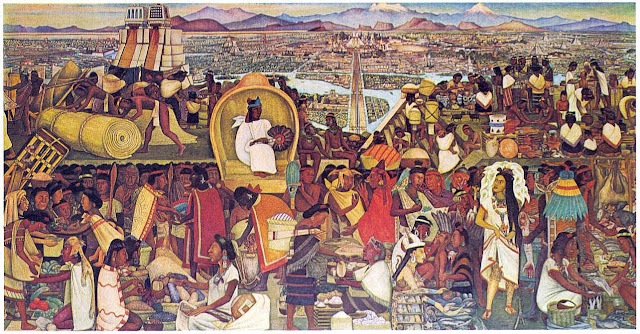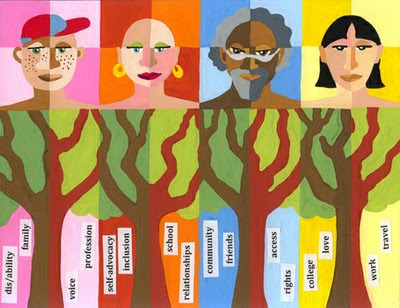Schedule for Final Project
Friday, midnight Nov. 27--Deadline to turn in draft version of you Twine 2 project. Your project is the game/tour you made for the Worlds Fair Pavilion for your partner. Turn this in under your name please. It will put on the portfolio under your name. Title the project with the name of the world you represented.
Friday Dec. 4, midnight--Deadline for your final project submission. Please meet this deadline so that your project can be reviewed.
Submit your project by email or by sending via email a link to a google drive folder with your final project in it. Remember, submit your final project as an html document using the export function in Twine2. If you have images, or music or other inserts make sure you include the html in a folder with your images, sounds, videos, etc. Keep everything together or we won't be able to see your media when we play through your Twine2 project
As requested, Here are the instructions unpacked into step-by-step units,
1. Export your Twine2 project as an html document.
2. Put the exported html file in a folder on Google Drive together with any files like images or sounds or videos that you have inserted in the Twine2 project. These all have to be kept together with the html file in order to work.
3. Send me an email with a link to the Google Drive Folder where you put your files for the Twine2 project. Remember you have to set the permissions on the folder to allow me to access the files and download them. This is the same procedure you used to submit your inventory at the midterm.
4. If, for some reason you can't access Google Drive you can try emailing them to me all together, the html and resources, because the files are probably not that big it is possible that they will get through email. The Google Drive way seems to work best. Let me know if you have a problem and we can resolve it.
Writing Project to Complete Before Tuesday's Zoom Class
Before you come to class on Tuesday morning I would like you to complete this writing project by following the specific steps I outline below. On Tuesday we will be writing in class so be prepared to write on the device with which you are zooming or on a separate device or with pencil/pen and paper whatever makes you comfortable. Make sure you will be able to read what you write when you look later.
Problem: We are going to design 3 non-player characters by following the step-by-step directions on this blog post. These characters are being designed to be part of your Twine2 project.
Non-player character definition: A non-player character is not the embodiment of a player in the game or story, but a character usually controlled by limited, if any, algorithms. The character does not have free will and does not evolve in the course of the narrative. The character should have a back story but should have no more than two character traits. Characters with single character traits are discouraged although characters that have one strong trait that almost obscures the second character trait are ok and very workable. Designing characters with at least two traits add depth to the character experience even though the audience may not be conscious of what aspects of the character they are responding to. For practical reasons, no character in any but the longest narratives should have more than 3 traits, and non-player characters should have no more than two.
Character Trait Definition: terms that describe a character's personality or qualities that make them who they are. In other words, how you would describe that character to someone else. Traits are the vocabulary we use to describe personality, actions, and perhaps the internal values that motivate actions. We infer character traits from what we read as external evidence (clothes, grooming, posture, etc.); behavior (the way traits are demonstrated by action; demeanor, the way we underscore behavior with attitude and expression; and speech.
In this writing exercise, we will us traits to design characters. As a reference source here is a list of widely recognized traits:
Here is list of 638 character traits unfortunately divided into positive and negative lists, in other words, values weighted. In our current problem it is better to consider all character traits as neutral, what may be a negative trait on one world might be a positive trait on another. In constructing characters my best advice to you is to avoid judging them in any way.
Here is a link to shorter list of traits that is not values weighted.
Traits and Roles: The Last thing you need to know before starting is to be sure not to confuse character traits with character roles. Terms like hero, mentor, villain, lover, loser, these are not traits, these are roles in the story. In fact I generally suggest that you never create characters to match the role but rather create characters randomly or from your observation of people, and then cast them in a role. Stories are often enhanced by roles being occupied by characters you don't expect.
First Person Immersive: In Immersive forms of storytelling, we usually tell the story in first person immersive, that is there is no character we are watching with the idea of relating to but rather we are experiencing the story directly, as ourselves.
In some immersive situations we might be asked to play a role in the story in which case we experience the story as a member of the cast telling it, but this generally means limiting character traits so as to not be too confusing for those role-playing. Often in role-playing we are not provided with traits but rather a role and a back-story, then the character traits reflect our own.
Step One: Make a list of three dominant traits. These will be the most visible and easy to read aspect of the personality of the character you design. Make sure the dominant traits of all three characters are appropriate for the culture of the world you are representing. In other words, would the culture of the planet you are representing approve of the inclusion of these characters with these traits. These characters are representing the actual inhabitants of the planet and although you may have a cast of real people enhancing the story environment, most of the weight of representation has to be done by non-acted characters for reasons of economy or limitation of resources or for the expediency of moving as many people as you can through the themed attraction.
Step Two: For each of the dominant traits you list, one trait per character, now list a second trait for each character, a trait that is the direct opposite in your mind to the trait you have already listed so that now you have two traits for each character forming a binary opposition. These two traits form a continuum along which a developing character can migrate or transform. In a non-player character the visibility of the dominant trait and its opposite give us a sense of the potential of the character to transform whether we identify with surety the dynamic of the two traits forming the core of the character representation.
The degree of reality of the characterization has to do usually with whether the character is observed, derived in some way from actual humans or whether the character is just imagined. Not all characters are best shaped from reality, it depends on the context.
Step Three: For each of your three characters, describe how their appearance reflects the dominant trait. For each character find three elements that convey that dominant trait. You can use expression, gesture, pose, posture, grooming, and physical description the elicits a reading of the dominant trait.
For each of the three characters create one appearance element that conveys the opposite trait you have created for that character. You are creating a visible contradiction to the dominant trait.
Step Four: Cast the characters into roles within the story environment you have created in Twine2. Cast those roles now and give a brief description for each character of the role they will be playing.
For character No. 1, describe an action that the character does that conveys the dominant trait. This action should be included in the actions appropriate to the characters role, but does not necessarily have to be in harmony with the actions of the role. The action should be very concretely described as Character No. 1 is to be a non-speaking character and needs to be designed so as to show the two character traits of their design without using any words.
Step Five: Write three sentences or phrases that Character 2 and Character 3 would say that conveys their dominant character trait. Combine these phrases with an action that conveys the dominant character trait.
Then write one sentence or phrase that conveys the opposite character traits of Character 2 and Character 3. In your description combine the sentences or phrases with an action that conveys the opposite character trait.
Step Six: Write a dialogue between character 2 and character 3 in which the sentences or phrases that convey all their character traits appear. During the conversation Character 1 enters the scene and reacts to the conversation in a non-verbal way and then exits the scene. Describe the whole scene, the dialogue and character 1 reaction. Ideally you should write this for the roles the characters are playing in your Twine2 project.
In this week's zoom session we will explore writing a story in first person immersive for a themed attraction of the sort you are designing for your Twine2 project.


















